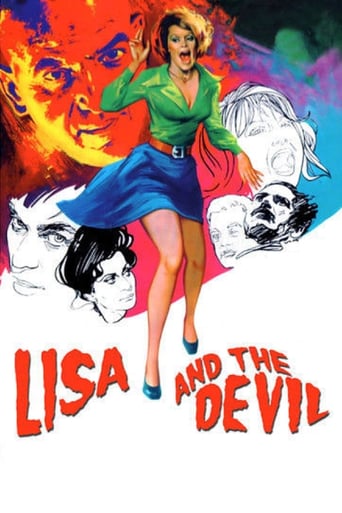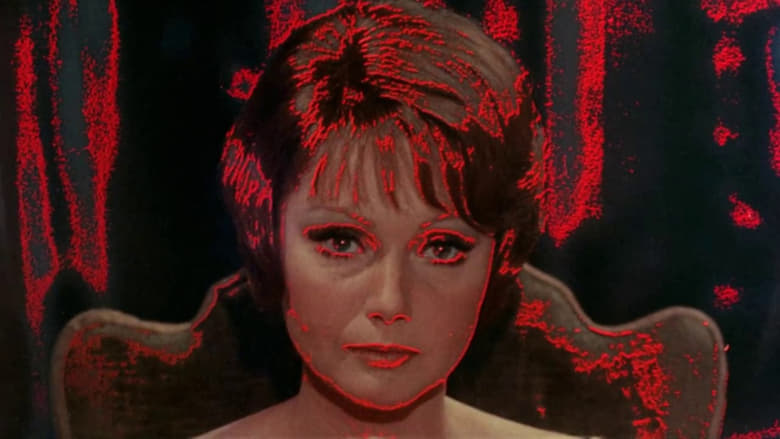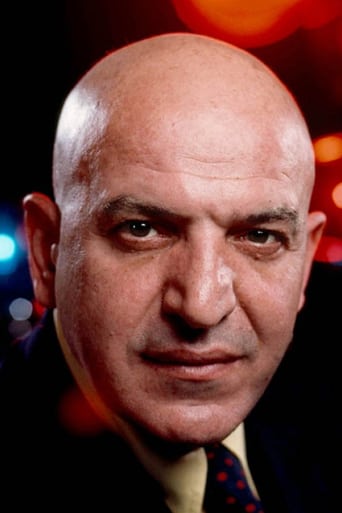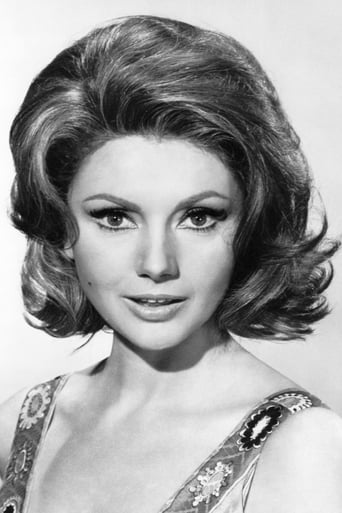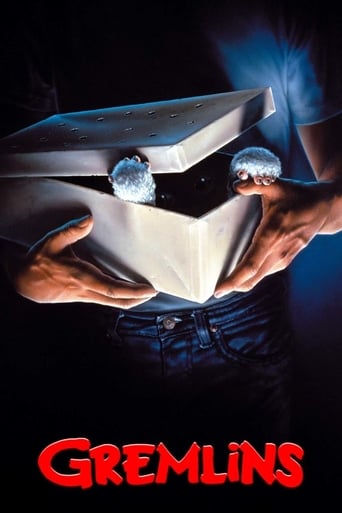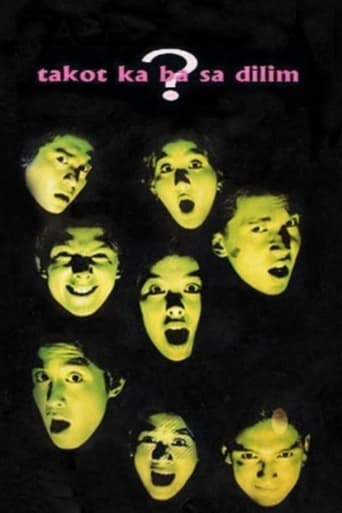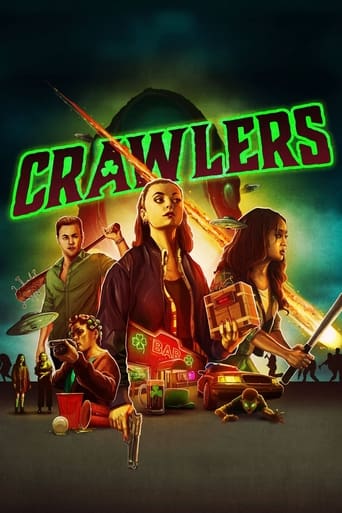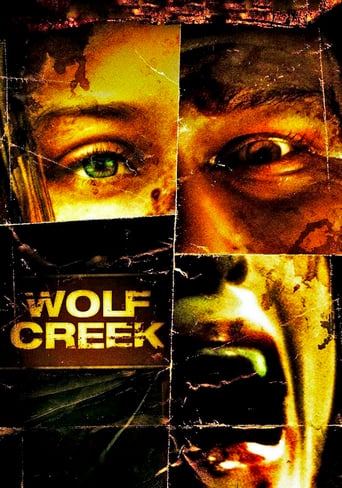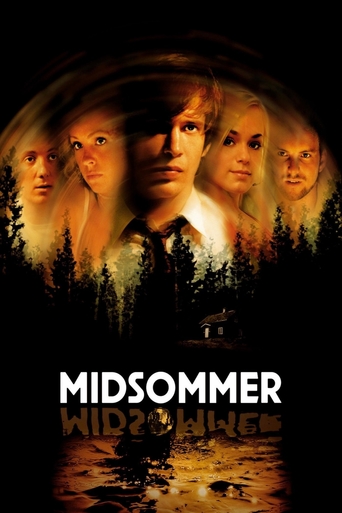Lisa and the Devil (1976)
Lisa is a tourist in an ancient city. When she gets lost, she finds an old mansion in which to shelter. Soon she is sucked into a vortex of deception, debauchery and evil presided over by housekeeper Leandre.
Watch Trailer
Cast
Similar titles
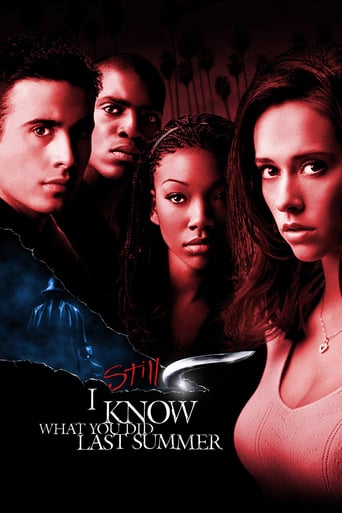


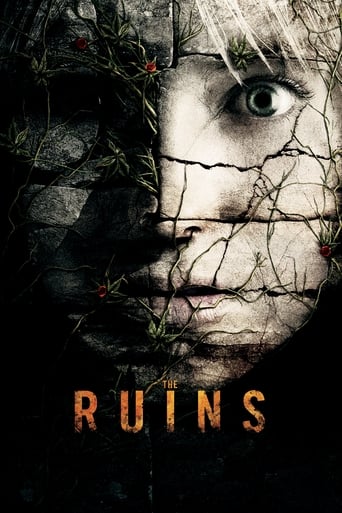
Reviews
Why so much hype?
As Good As It Gets
n my opinion it was a great movie with some interesting elements, even though having some plot holes and the ending probably was just too messy and crammed together, but still fun to watch and not your casual movie that is similar to all other ones.
It's entirely possible that sending the audience out feeling lousy was intentional
Lisa and the Devil was a film where famed Italian director Mario Bava was given full creative control. Unfortunately, on release it failed to find an audience and disappeared from cinemas very quickly and did not even play in most territories at all. Three years later its producer Alfredo Leone tried to recoup some money on his investment by shooting some new footage with Bava's assistance. This possession themed material was inspired by The Exorcist (1973) and it was then spliced in along with huge sections of Lisa and the Devil, the resulting film was The House of Exorcism (1975). Needless to say this latter film was seriously incoherent, yet for a couple of decades remained the version of the movie you were far more likely to encounter. Thankfully in the years since, the far superior original film has made a comeback and is now the version most prominently seen; The House of Exorcism has become more of a curiosity piece. While holidaying in an ancient Spanish town, a young tourist called Lisa encounters a strange man with a mannequin who appears to be the double of an image of the devil she saw on a mural on a wall in the city. After accidentally killing a man, she winds up at a remote villa after hitching a ride with a married couple and their chauffeur. She discovers the mannequin man works here as the butler for a blind countess and her unbalanced son. The guests stay the night but before long a series of murders and strange events follow.The failure of this movie at the box office isn't really all that surprising to be honest. It is such a strange film which was only ever going to have a fairly limited appeal. While it is a horror movie, it is quite restrained and it has an odd ambiance a lot of the time. Telly Savalas portrayal of the character Leandre perhaps illustrates this, where he is played almost comically, despite being marked out as being the devil from an early point. It has to be said that Savalas puts in a great charismatic performance here and brings a lot to the table, it's just kind of unusual and it does throw in a curve ball at the audience for sure. There are several disparate combinations at work here which give the film an unusual feel - gory horror versus the subtleties of a ghost story, melodramatic romance versus necrophilia, comic tone versus dark and sinister undercurrents. All of these elements seem to be pushing against each other, resulting with a film with an odd tone and one which was most probably a hard sell in terms of finding an audience.Whatever the case, this is a film which can be fully appreciated nowadays. It displays Bava's most prominent strength, i.e. gorgeous visuals. The cinematography is beautiful throughout with exemplary use of colour. From the striking opening credit sequence in which tarot cards are used to introduce the characters, to the early scenes in the empty streets of the ancient city where Lisa is framed beautifully against the old architecture, to the ornate interiors of the ominous villa, the visual eloquence is well in abundance from start to finish and really creates a great sense of mood and atmosphere. There is visual invention on display all the way through this one, with inventive shots aplenty, complemented further by the lush music score from Carlo Savina. The overall effect is a very dreamlike film, which is coming from the same general place as the earlier ethereal American cult movie Carnival of Souls (1962). Lisa and the Devil is far more cryptic than that one though and its tale of reincarnation and ghosts is one that invites debate. Its strange ending aboard a jumbo jet only adds to the ambiguity in some ways but in art I have often found questions to be more interesting than answers. For a viewer to have any chance of appreciating this strange lyrical movie they will have to have at least some tolerance for narrative uncertainty. This one unashamedly puts emphasis on mood over plot and atmosphere over sense. It's certainly not a film for everyone - many horror fans will be put off by its deliberate pacing and unusual tone – but it is a movie which will reward patient viewers who appreciate Euro horror from the more dream-like end of the spectrum.
This was my third time watching this most personal of Bava's works: whether it is due to the fact that the last two occasions proved problematic (the original Image Entertainment DVD experienced an audio glitch during playback that nearly blasted my TV speakers, while there were constant audio-related issues on the Italian-language track of the copy I acquired of the movie's Raro Video edition!) or the shadow that always loomed large over it in the shape of the execrable re-edit THE HOUSE OF EXORCISM (1975), I have never been really taken with the film as many others seem to be!! Truth be told, watching the featurette "EXORCISING LISA" soon after, I was sort of glad to realize that I was not quite alone in this – as both assistant director and the director's own son Lamberto Bava (who always felt the end result, even in its true incarnation, was impenetrable and somewhat unresolved!) and Bava scholar Alberto Pezzotta (suggesting that the time of Gothic Horror had passed and that, other than merely ethereal, it was elegiac and self-referential!) disclaim its masterpiece status!! Incidentally, though the script is attributed to the elder Bava and producer Alfred Leone on foreign prints (as a matter of fact, throughout my ongoing Bava centenary tribute, it has been a constant irritation to find English credits on Italian-language editions of his pictures!), it was actually penned by other hands – including Roberto Natale, who also puts in an appearance in the 25-minute doc!! Incidentally, while ostensibly an original, elements from it could be traced to several short stories dutifully namechecked during said featurette as well as Tim Lucas' audio commentary Mind you, the movie is undeniably intriguing (in my review of the director's KILL, BABY KILL! {1966}, also co-written by Natale and a film whose stature seems to grow with each viewing, I mention how LISA owes a debt to it in the desolate narrow streets/decaying villa settings and the general nightmarish vibe) and, yet, it comes off as strangely aloof: one does not really connect with any of the characters throughout especially, as with A BAY OF BLOOD (1971), these largely seem to be on hand merely to ratchet up the 'body count' department (did we really need an additional love triangle to the mind-boggling quintet – taking into consideration that Elke Sommer here undertakes a dual role – already involved?!). The score by Carlo Savina (with generous but effective sprinklings of Joaquin Rodrigo's famous "Concierto De Aranjuez") is a major asset, as is the bemused presence of Telly Savalas (obviously assuming the latter half of the titular parts, scheming and manipulating the various figures around – in both their human form and lookalike mannequins – as if they were pieces on an invisible chess board while under the guise of an overworked and, seminally, lollipop-sucking butler!). The rest of the cast, however, are only so-so: Alessio Orano is, fatally, unsympathetic as an impotent necrophile(!); Alida Valli, on the other hand, is imposing as ever playing his aristocratic and over-protective blind mother; and Espartaco Santoni is decidedly baffling as the latter's husband and the former's rival for love of his own spouse Sommer (his comings and goings, sometimes literally from death to life, eventually grew irritating!); while Sylva Koscina, Eduardo Fajardo and Gabriele Tinti, as already intimated, are at once underused and downright redundant! Typical of Bava, too, the movie's look cannot be faulted (despite having a Spanish d.p., with a penchant for shooting in soft-focus, forced on him), effortlessly moving between the modern-day 'bookends' and the period milieu of its central narrative.By the way, given that I am going through the director's filmography in a non-linear fashion, it becomes interesting to note parallels between efforts that one would probably overlook if they were to be viewed chronologically; recently, for instance, I picked up on how SHOCK (1977) is pretty much a reworking of THE WHIP AND THE BODY (1963) and even HATCHET FOR THE HONEYMOON (1970) in its depiction of a deranged protagonist coming to terms with a crime that had been all but blocked out of its consciousness. Having just re-acquainted myself with the latter prior to my screening LISA, which I took as Bava's most Buñuelian work (in view of its leading man's affinity with the latter's Archibaldo De La Cruz), here we have an ending – the Devil adopting modern means of transportation – which recalls the Surrealist maestro's slyly abrupt way of concluding his SIMON OF THE DESERT (1965)! Since both Bava films were actually shot in Spain, could it be that the cultured yet self-effacing Italian was drawn to checking out the oeuvre of the country's most celebrated celluloid son at some point during their making? That said, Lucas claims the device – along with the film's inherent oneiric tone – was actually a direct allusion to Roger Vadim's "Carmilla" adaptation: different strokes for different folks, I guess! The audio commentary did sometimes go overboard in trying to match the poetic quality of the picture: the last rose of the season plucked by Orano for Sommer at one point apparently stood for Bava's own last gasp at making an international name for himself – if you say so, Tim but, then, I was grateful to learn that Bava appreciated the work of Georges Franju and, indeed, it had never occurred to me before that he recruited two ladies from his films, i.e. Valli (from EYES WITHOUT A FACE {1960} – her mannered death scene being even incorporated in the finale here) and Koscina (from JUDEX {1963}), for LISA! In the end, while not quite among the director's greatest, the film under review is still vastly preferable to its bastardization THE HOUSE OF EXORCISM which, regrettably, will follow presently in my (41-strong but by-now inevitably winding down) Bava marathon.
Unfairly neglected and forgotten, Mario Bava's "Lisa and the Devil" was to become one of the most acclaimed examples of Italian horror, and quite possibly, ranked among such works as "Hour of the Wolf" and "The Shining" as one of the genre's most complex and thought-provoking efforts. Unfortunately, due to the greed of it's producer Alfredo Leone, the only international distribution the film would get (if you can still label it a same film), was the awful butchered 'producer's cut' - "House of Exorcism" - a sleazy, mean-spirited and cheesy "The Exorcist" rip-off, that randomly spliced bits and pieces of Bava's film into the mix. "Lisa..." however, was the polar opposite of "House", and when it was finally rediscovered in it's original form, nobody wanted to see it expecting it to be no different from it's re-cut version. Thankfully, the film gained something of a cult following, even if it was not enough to make it acchieve it's deserved status. A film more reminiscent to the works of Jean Cocteau and Luis Bunuel than it's horror contemporaries, "Lisa and the Devil" is a barroque, nightmarish ride through what may well be Hell, as we follow a lost tourist - Lisa (the gorgeous Elke Sommer), finding shelter at a spooky villa owned by the mysterious Contessa and her son (Alida Valli and Alessio Orano), and soon finds herself caught in a grizzly web involving necrophilia, incest and murder, all of which is controlled by the sinister butler Leandro (Telly Savalas), who may or may not be the Devil himself. Often shifting between scenes of undeniable beauty and poetry, to moments of pure Gothic horror, this is Bava's lyrically macabre mediation on love, life and death - a theme which he wanted to work on for many years. Indeed, this is the Maestro's most personal film, and one can really see how much emotion has been put into it, as it is a viewing experience that touches deep down into the human heart. It seems as if each and every work he made before this (particularily his 1966 classic "Kill Baby, Kill") was simply a "rehearsal" so that he could finally put it all together in his ultimate masterpiece (the same thing can be said of Bava's other obscure opus "Rabid Dogs", which suffered an even worse fate than this one). Every small detail is precisely calculated, from the multi-layered story and the garrish visual style, all the way to the soundtrack. Carlo Savina's variations on Rodrigo's "Concerto de Aranjuez" (addmitedly, not a very suitable song for a horror film) makes one think te song was made precisely for this film alone, fitting perfectly with it's morbidly beautiful, melancholy-ridden tone. Bava played this song in between takes to get the actors into their characters, and it's quite clear that they just flow with the music wonderfully, hightening the film's emotional factor. Speaking of acting, the film also makes great use of it's talented cast. I can't say Sommer is able to act much, but she definitely looks the part, and can really convey the idea of being a stranger unwillingly trapped in a hellish universe. Telly Savalas steals the show as the occasionally eerie, but quite sympathetic antagonist, and it's obvious he's having the time of his life performing in this one (his improvised monologue near the end of the film is clear example of this). Allida Valli is just plain creepy as the Countess, who has the weirdest mother-son relationship ever since "Psycho". Sylva Koscina is great as the frustrated, adulterous housewife, and Alessio Orano does his best Vincent Prince impersonation as the lonely and clearly disturbed "mamma's boy" - Maximillian. Needlessly to say, it is overall, an amazing film, and my personal favorite horror film. It's not really for everyone, but I can only hope this can one day receive it's deserved recognition.
Lisa and the Devil (1973) ** (out of 4) A tourist (Elke Sommer) gets lost in an unknown European city but soon ends up at a strange mansion being run by a weird son, his even stranger mother and their lolly-pop sucking butler (Telly Savalas) who might just be the devil himself. Director Bava was offered by his producer the chance to make a film of his choosing and this is the one he picked. The film turned out to be a bust as it couldn't be sold, which resulted in the producer making a rip-off of The Exorcist but today many people see this movie as the director's masterpiece. Sadly, I'm not one of those people as I find this film technically thrilling but as far as entertainment goes this thing is pretty hard to get through. I love to see art mixed with horror but to me it just doesn't work here. I think you're either going to get into the film or you're not and for me I've never been caught up in its story, surreal nature or that what the hell atmosphere it has going for it. The early scene in the film has Sommer getting lost in what appears to be a maze. She's attacked by a man, it gets dark and she still hasn't found her way out. I believe this sequence is here to draw the viewer in but for me it took me out of the film. As I said, on a technical level this movie is near flawless but the story is also important to me and Bava never can drag me in and instead the entire film feels like one scene dragging after the next. Bava's camera-work is top-notch once again as is the beautiful lighting. The music score is also very well done and matches the look of the film perfectly. Sommer turns in a decent performance but I couldn't help but wish someone stronger was in the role. Savalas does a fine job and we see his lolly-pops a while before his famous TV show.
